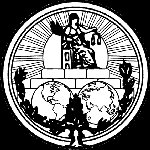By: Tyler Church, Legal Intern, International Judicial Academy
The
conclusion of World War I left Europe devastated. The international community
expressed a desire for a peaceful solution to grievances between nations in
order to help prevent a conflict that impacted so many people. The Treaty of
Versailles (1919) that was drafted and signed at the end of the “Great War”
provided for the creation of a the League of Nations, a new international body
that would be designed to guarantee peace and security and prevent future wars.
A special
commission was formed and empowered with the task to establish a covenant, or
constitution, for this new League of Nations. This Covenant was later approved
at the Paris Peace Conference by all 37 of the original member states.
Included in the Covenant was Article XIV which specifically allowed the League
of Nations to develop plans for and establish a new international court to be
called the Permanent Court of International Justice (PCIJ). The Covenant
specified that “[t]he Court shall be competent to hear and determine any
dispute of an international character which the parties thereto submit to it.”
Soon
after the Covenant came into force, the League of Nations passed a resolution
to create an Advisory Committee of Jurists responsible for the formation of the
PCIJ. This committee was comprised of ten independent jurists from different
nationalities. In December of 1920 the commission submitted the Statute of the
Court to the Assembly of the League where it was then approved unanimously and
submitted to the individual members for ratification. By September, 1921 there
were 47 countries that had ratified the Statute of the Court and 48 countries that
signed the compulsory jurisdiction clause.
The Court
first sat on February 15, 1922 at its permanent location in the
Peace Palace in The Hague, The Netherlands, with Dutch jurist Bernard Loder as
the first President. During this session, the court established the applicable
law that would be used to render decisions in addition to other housekeeping
issues. This court would be the first of its kind. Its rulings would be binding
upon the parties, unlike the Permanent Court of Arbitration that had a home in
the Peace Palace and that had been established as a result of the Hague
Convention of 1899.
As the
first tribunal of its kind, it was important that the court establish both the
jurisdictional bounds as well as established guidelines for how the court would
judge each case. For its deliberations and decisions, the PCIJ established that
it would first rely on international conventions and treaties, secondly, on
general customs in the region, and lastly on general principles of law
recognized by civilized nations. The Court had two types of jurisdiction to
bring cases before it. The first was a voluntary jurisdiction where members
would submit a dispute to the court through an agreement. The second type of
jurisdiction was a compulsory jurisdiction. In this system states agreed
through a convention to give the court jurisdiction for all disputes that arose
between them. Though the court preferred compulsory jurisdiction, about half of
the countries that had ratified the protocols chose voluntary jurisdiction.
The Court
was open to any member of the League of Nations or any non-member sovereign
mentioned in the annex of the Covenant. This included countries such as the
United States which had not joined the League. As an international court it
primarily focused on cases between two countries, but also allowed a state to
present a claim on behalf of one of its citizens against a foreign government.
From its inaugural sitting in 1922 until 1940 the PCIJ ruled on 29 cases
between states, gave 27 advisory opinions, and in total heard 66 cases.

 International
Judicial Monitor
International
Judicial Monitor